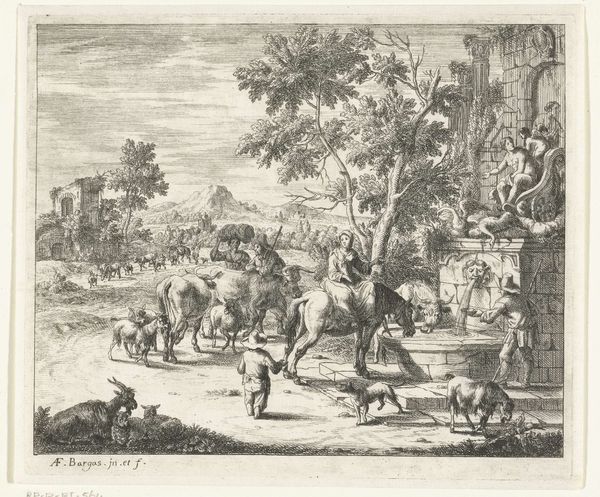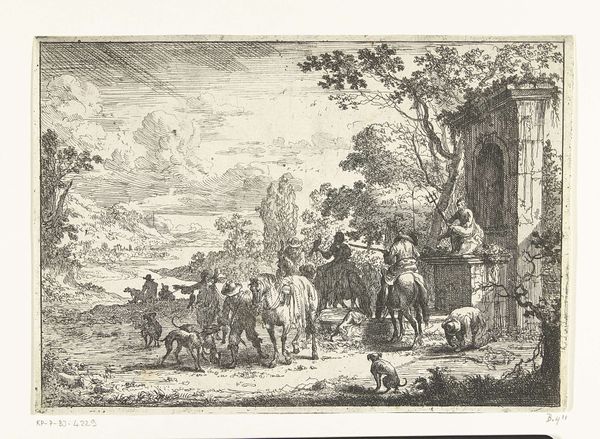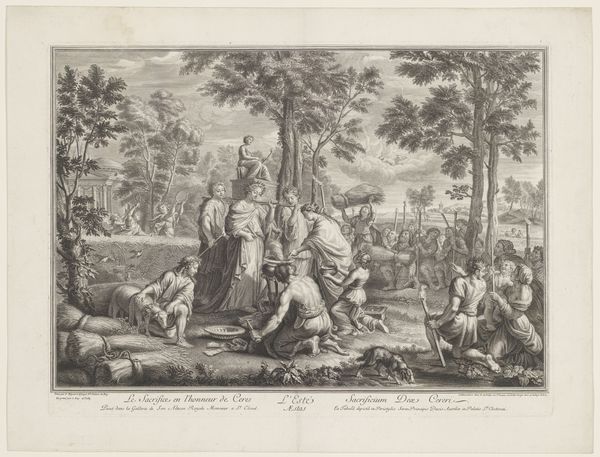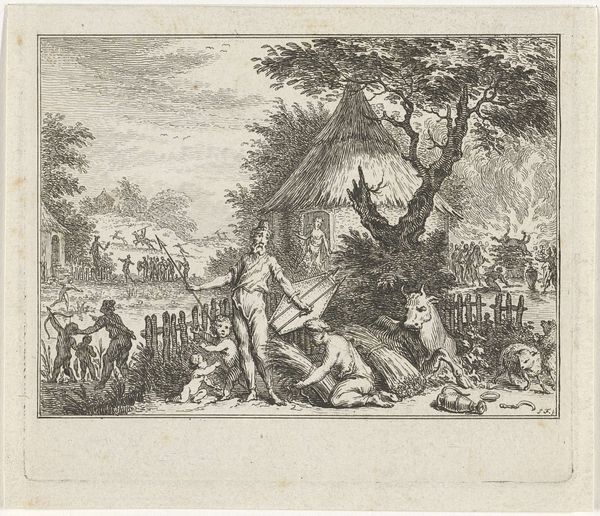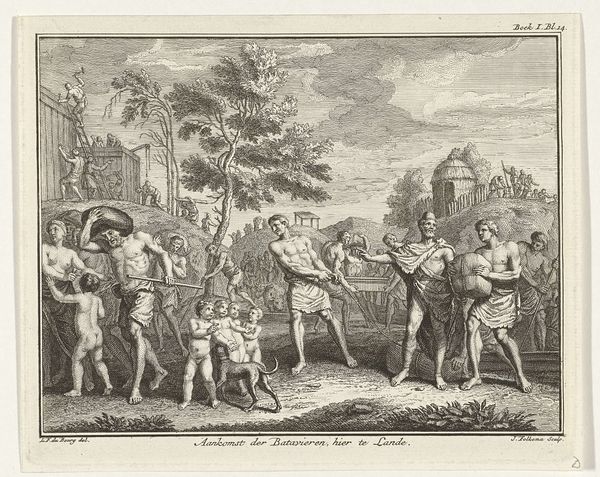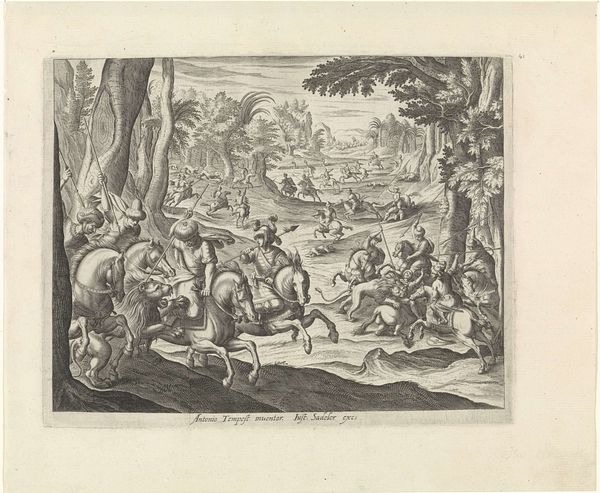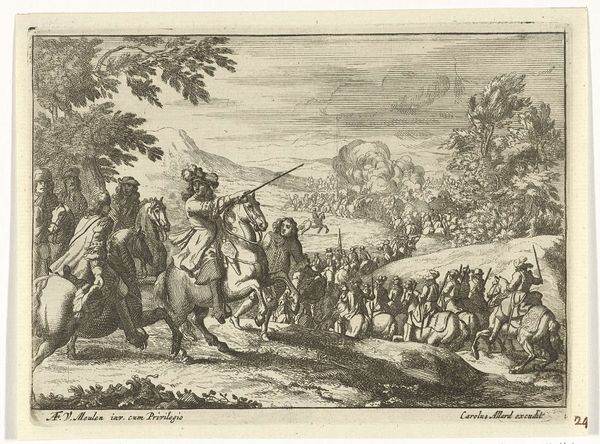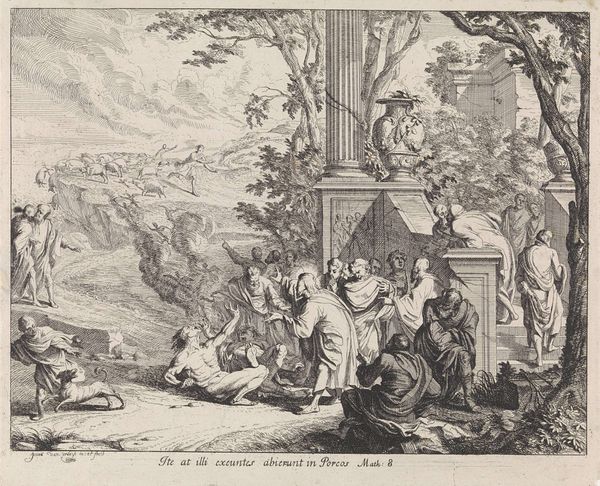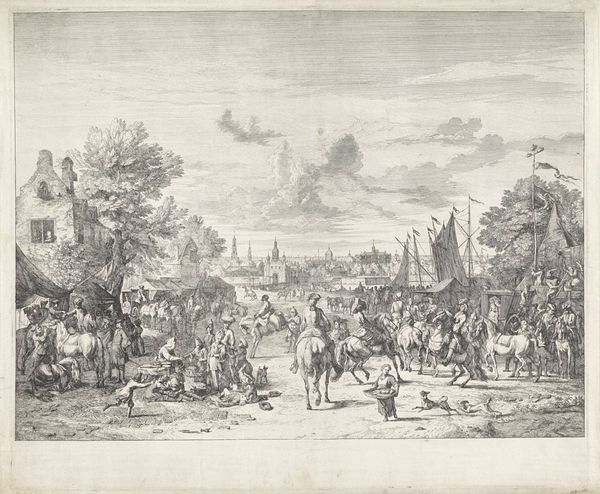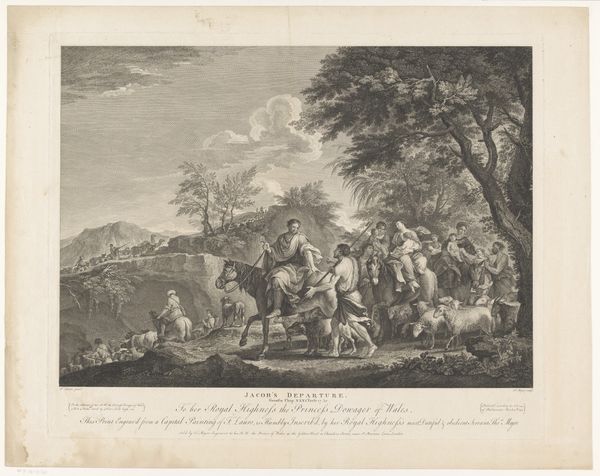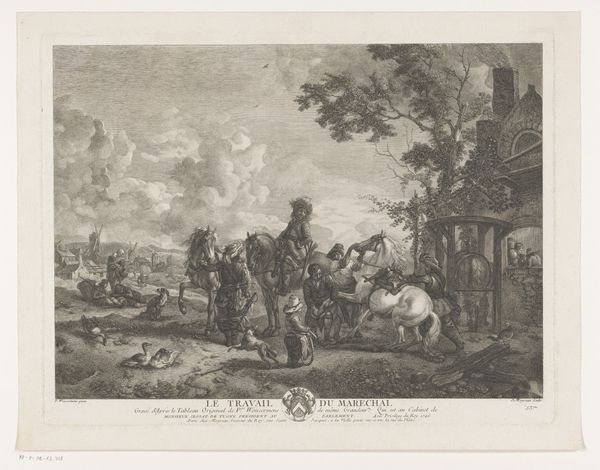
Landschap met dansende man en vrouw en doedelzakspeler bij ruïnes 1660 - 1699
0:00
0:00
drawing, ink, engraving
#
drawing
#
baroque
#
pen drawing
#
landscape
#
figuration
#
ink
#
genre-painting
#
engraving
Dimensions: height 158 mm, width 186 mm
Copyright: Rijks Museum: Open Domain
Curator: This line engraving by Franciscus de Bargas, titled "Landscape with Dancing Man and Woman and Bagpipe Player near Ruins," was created sometime between 1660 and 1699. It presents quite a scene. Editor: It does! It almost vibrates with frenetic energy. There’s a sense of playful chaos to the composition. It's not immediately clear where to focus. The dark and light areas push and pull you across the image. Curator: Indeed. De Bargas was working within the established tradition of genre scenes, catering to a market keen on depictions of everyday life, often romanticized or moralized. Consider how the ruins subtly juxtapose against the revelry. They hint at the passage of time and perhaps even the fleeting nature of joy. Editor: That juxtaposition you point out brings an element of the sublime to the seemingly carefree depiction of music and dance, infusing the image with tension and maybe even grief, challenging idealized notions of pastoral life. The very material of the work, an engraving, speaks to the accessibility of these images to a broad audience. It underscores a developing early democratization of visual culture. Curator: Precisely. Furthermore, the choice to include dancing peasants raises interesting questions about class and representation during this period. Who was consuming these images and what did they signify to them? Was it an appreciation of rustic life, or was it meant to be a form of satire? Editor: Or was it intended to simply romanticize it all? The gendering of labor also is quite visible with women appearing to actively enjoy folk life in direct correlation with masculine authority over instrumentation and performance. The lack of agency here really highlights cultural paradigms in need of disruption. Curator: The ambiguity itself makes the piece so compelling. This seemingly simple scene is pregnant with social and historical context. The landscape is as much a cultural construct as it is a natural one. Editor: This certainly provides plenty of fodder to investigate the intricacies of cultural representation through a feminist lens, while understanding broader societal impacts and potential power dynamics. Curator: It really is quite multifaceted isn’t it. It challenges us to delve beyond the surface to uncover the layers of meaning embedded in this Baroque landscape. Editor: Yes. Thank you for expanding my reading of de Bargas’ work!
Comments
No comments
Be the first to comment and join the conversation on the ultimate creative platform.
